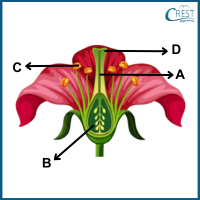1. To investigate the effects of light on seed germination, a student sets up three groups of seeds. Group A is exposed to natural sunlight, Group B is placed in complete darkness, and Group C is exposed to artificial light. After a week, the student observes that Group A and Group C seeds have sprouted, while Group B seeds have not. What can the student conclude from this experiment?
a) Seeds can germinate in complete darkness.
b) Artificial light inhibits seed germination.
c) Natural sunlight is necessary for seed germination.
d) Seeds do not require light for germination.
Answer: c) The student can conclude that natural sunlight is necessary for seed germination (option c). This conclusion is supported by the observation that seeds exposed to natural sunlight (Group A) and artificial light (Group C) have sprouted, while seeds in complete darkness (Group B) have not. This suggests that light, specifically natural sunlight, plays a crucial role in triggering the germination process in seeds.
2. Consider the following statements and choose the correct option:
Statement 1: Wind is an agent of pollination that helps transfer pollen between flowers.
Statement 2: Insect pollination is primarily responsible for the pollination of plants with long, tubular-shaped flowers.
a) Statement 1 is correct but statement 2 is incorrect.
b) Statement 1 is incorrect but statement 2 is correct.
c) Both the statements are correct.
d) Both the statements are incorrect.
Answer: a) Statement 1 is correct, but statement 2 is incorrect.
Statement 1 is correct as wind plays a significant role in the pollination of certain plants, especially those with light and small pollen grains that can be carried by the wind.
Statement 2 is incorrect because birds are often associated with pollinating long, tubular-shaped flowers due to the presence of a beak, not insects.
3. In the following question, you will find an assertion and a reason. Select the appropriate option that applies.
Assertion: The primary purpose of flowers is to facilitate sexual reproduction in plants.
Reasoning: Flowers primarily serve as a source of beauty and fragrance for plants, attracting insects and other pollinators to aid in the process of cross-pollination. The production of seeds is a secondary function of flowers.
a) Both the assertion and reasoning are correct, and the reasoning explains the assertion.
b) Both the assertion and reasoning are correct, but the reasoning does not explain the assertion.
c) The assertion is correct, but the reasoning is incorrect.
d) Both the assertion and reasoning are incorrect.
Answer: c) The primary purpose of flowers is indeed to facilitate sexual reproduction in plants through pollination. The production of seeds is a direct outcome of successful pollination. Flowers have evolved various adaptations to attract pollinators, but their primary function is to ensure the transfer of pollen for sexual reproduction.
4. From the given diagram, which part of the flower is responsible for receiving pollen during pollination?

a) C: Stigma
b) B: Ovary
c) D: Stigma
d) A: Style
Answer: c) The stigma is the part of the flower that is responsible for receiving pollen during pollination. It is located at the top of the style, which connects the stigma to the ovary. Pollen grains land on the stigma, where they can germinate and begin the fertilisation process.
5. A gardener wants to promote seed dispersal in their garden. Which plant would be most suitable for attracting birds as seed dispersers?
a) A plant with brightly colored flowers
b) A plant with large and fleshy fruits
c) A plant with sticky fruits that attach to animals
d) A plant with lightweight seeds that can be carried by the wind
Answer: b) Plants with large and fleshy fruits are more likely to attract birds as seed dispersers. Birds are attracted to the fruits due to their bright colors, sweetness, or nutritional value. As birds eat the fruits, they may accidentally swallow the seeds, which are later dispersed through their droppings in different locations, aiding in seed dispersal to new areas.


